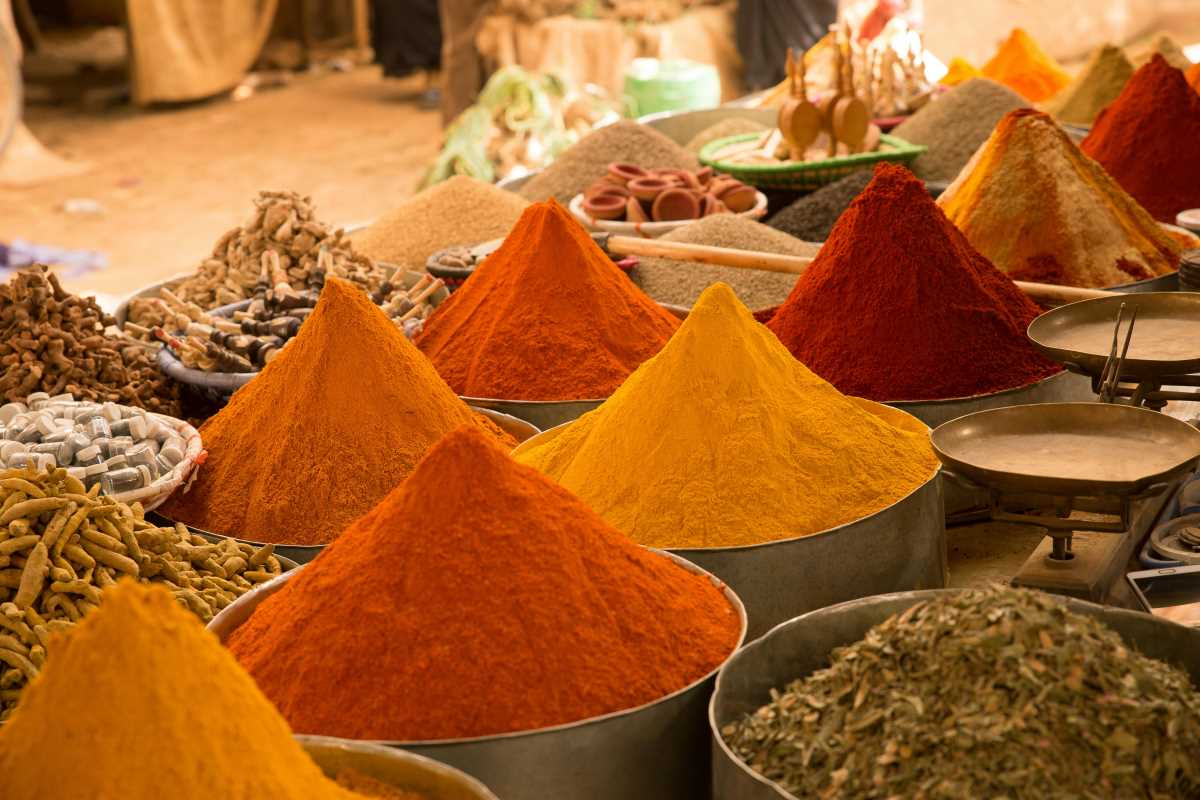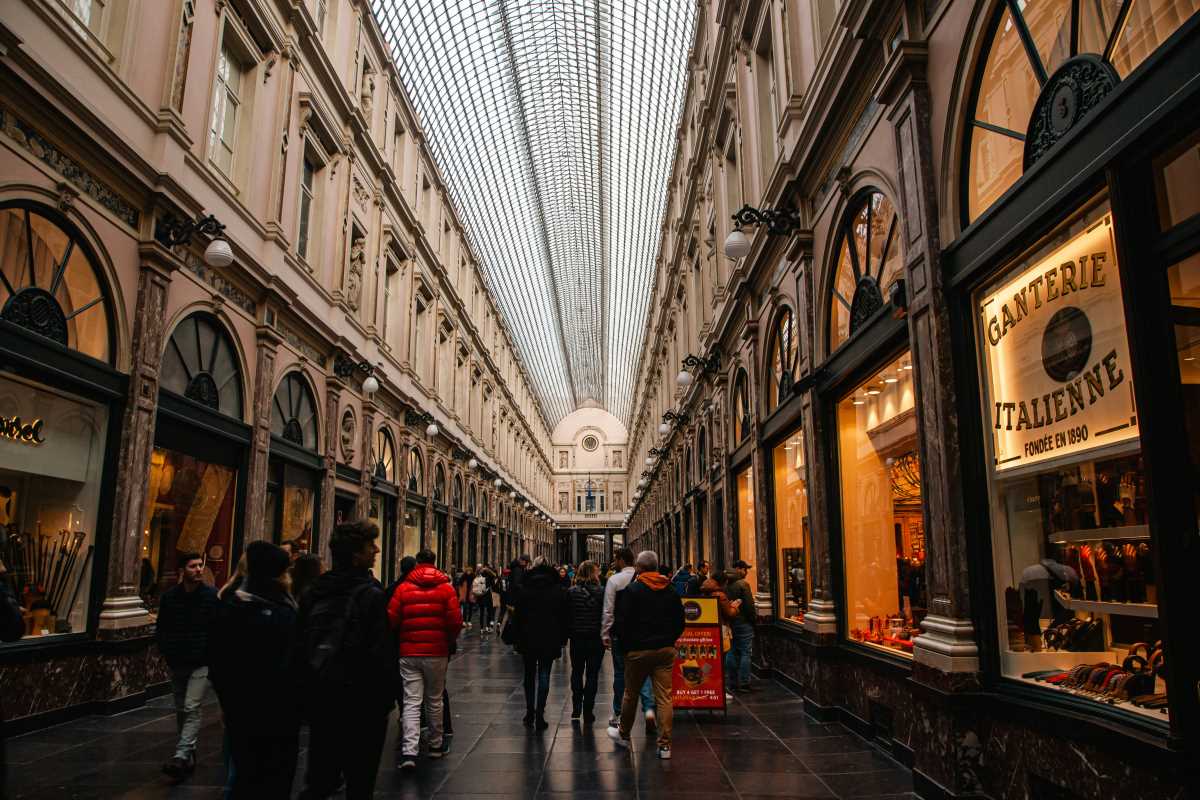Istanbul's spice markets offer a sensory wonderland where vibrant colors, enticing aromas, and the lively hustle of traders create an unforgettable experience. As you wander through the narrow aisles, the rich scent of saffron mingles with the earthy aroma of cumin, while the vibrant hues of paprika and turmeric enliven the stalls. The sounds of friendly haggling and the sight of beautifully arranged spices beckon visitors to explore deeper into this enchanting bazaar.
Historical Significance of Istanbul's Spice Markets
- The Grand Bazaar, established in the 15th century, became a pivotal center for trade between Europe and Asia, facilitating the exchange of spices and goods across continents.
- During the height of the Ottoman Empire, Istanbul's spice markets played an essential role in the empire's economy, attracting merchants from all over the world and encouraging cultural exchanges.
- The spice trade in Istanbul helped establish the city's reputation as a melting pot of diverse cultures, cuisines, and traditions, shaping its unique identity.
- Historical figures, including Marco Polo, documented the bustling activity and rich variety of spices available in Istanbul, highlighting its importance in global trade routes.
A Diverse Array of Spices and Products
- Saffron: Known as the most precious spice, saffron adds a vibrant color and distinct flavor to numerous dishes, from traditional Turkish pilafs to decadent desserts.
- Cumin: With its warm and earthy taste, cumin plays a crucial role in many spice blends and lends depth to meat dishes, stews, and vegetarian meals alike.
- Turmeric: Valued for its bright yellow hue and health benefits, turmeric serves as a staple in both culinary and medicinal applications.
- Paprika: Offering a range of flavors from sweet to smoky, paprika is a versatile spice used to enhance soups, sauces, and grilled meats.
- Sumac: This tangy spice provides a lemony kick to salads, kebabs, and rice dishes, adding a unique twist to traditional recipes.
- Nigella Seeds: Often referred to as black cumin, nigella seeds flavor bread, vegetables, and spice mixes, contributing a subtle bitterness and peppery aroma.
- Allspice: Despite its name, allspice is a single spice that imparts a combination of cinnamon, nutmeg, and cloves flavors, perfect for both sweet and savory dishes.
- Cardamom: Aromatic and slightly sweet, cardamom is a key ingredient in Turkish coffee and various pastries, enhancing their fragrance and taste.
- Cloves: With their intense flavor, cloves enhance marinades, desserts, and beverages, providing warmth and depth to numerous culinary creations.
- Coriander: Both the seeds and leaves of coriander are utilized in cooking, offering a fresh and citrusy flavor that complements a wide array of dishes.
Shopping Tips for Visitors
When visiting Istanbul's spice markets, it's essential to approach your shopping experience with a sense of adventure and openness. Start by taking your time to explore each stall, as the most authentic and high-quality spices often appear in less crowded areas. Don't hesitate to ask questions about the origins and uses of different spices; the local vendors are usually eager to share their knowledge and passion.
Negotiating prices is a common practice in these markets, so prepare to haggle respectfully. A good approach is to start with a lower offer and gradually increase it until you reach a mutually agreeable price. It's advisable to bring small amounts of cash, as some vendors may not accept credit cards. Lastly, consider purchasing a variety of spices in smaller quantities to sample their flavors without overwhelming your kitchen.
Market Comparisons and Global Influence
While Istanbul's spice markets are unparalleled in their diversity and historical depth, other global markets offer their own unique offerings. For instance, the markets in Brussels are renowned not only for their spices but also for their exquisite gourmet chocolate selections, which attract connoisseurs from around the world. Unlike Istanbul's focus on a wide range of spices and traditional products, Brussels emphasizes high-quality confectionery, providing a different but equally delightful sensory experience.
Markets in Marrakech offer a captivating blend of spices, textiles, and handcrafted items, reflecting the rich Berber culture. Each of these global spice markets brings its own cultural influences and specialties, making them worth visiting for those interested in exploring diverse culinary traditions.
Spice markets offer more than just a shopping destination; they are a gateway to understanding the local culture and traditions. Engaging with the friendly vendors and observing their interactions provides insight into the daily life and customs of Istanbul's residents. The aroma of spices often intertwines with the sound of traditional Turkish music, creating an immersive atmosphere that captivates all the senses.
Visitors can participate in cultural experiences such as traditional tea ceremonies or watch artisans at work, crafting spice blends and other local products. These interactions deepen appreciation for the heritage and craftsmanship that define Istanbul's spice markets, making each visit a memorable and enriching experience.
Personal Reflection
Walking through Istanbul's spice market felt like stepping into a living tapestry of colors and scents. The moment I entered, I was enveloped by the rich, aromatic blend of spices, teas, and herbs wafting through the air. Every corner seemed to sparkle with vibrant hues – deep reds of paprika, golden yellows of turmeric, and emerald greens of dried herbs. It was impossible not to be drawn in by the stunning displays, each stall presenting its own unique treasures.
The vendors were incredibly welcoming, their warmth making the experience even more special. One vendor saw me admiring some cinnamon sticks and invited me to smell their sweetness, sharing stories about how they’re harvested and used in traditional Turkish recipes. I was captivated, not just by the knowledge, but by the genuine passion in his voice. Another seller handed me a pinch of sumac to taste, explaining its tangy flavor as a key ingredient in Turkish cuisine.
What amazed me most was the sheer variety of spices and their histories. Each blend seemed to carry a story. One mix, specifically made for meat kebabs, had been perfected over generations. Another, a fragrant tea blend, was designed to soothe the soul after a long day. It felt like I was stepping into a world where the past and present coexisted, with each spice a bridge connecting me to the city's rich heritage.
The market wasn’t just about the products; it was about the atmosphere. The bustling energy, the melodic calls from vendors, and the hum of conversations in multiple languages created a rhythm that was almost hypnotic. I found myself lingering, reluctant to leave as I soaked up every moment. It was a feast for the senses and a heartfelt connection to Istanbul’s vibrant culture.
By the time I left, my bag was heavier with saffron, dried pomegranate seeds, and a wonderfully fragrant apple tea, but my heart was lighter. I didn’t just leave with spices – I left with a deeper understanding and appreciation for Istanbul's history, its people, and its boundless charm.
 (Image via
(Image via



.jpg)

